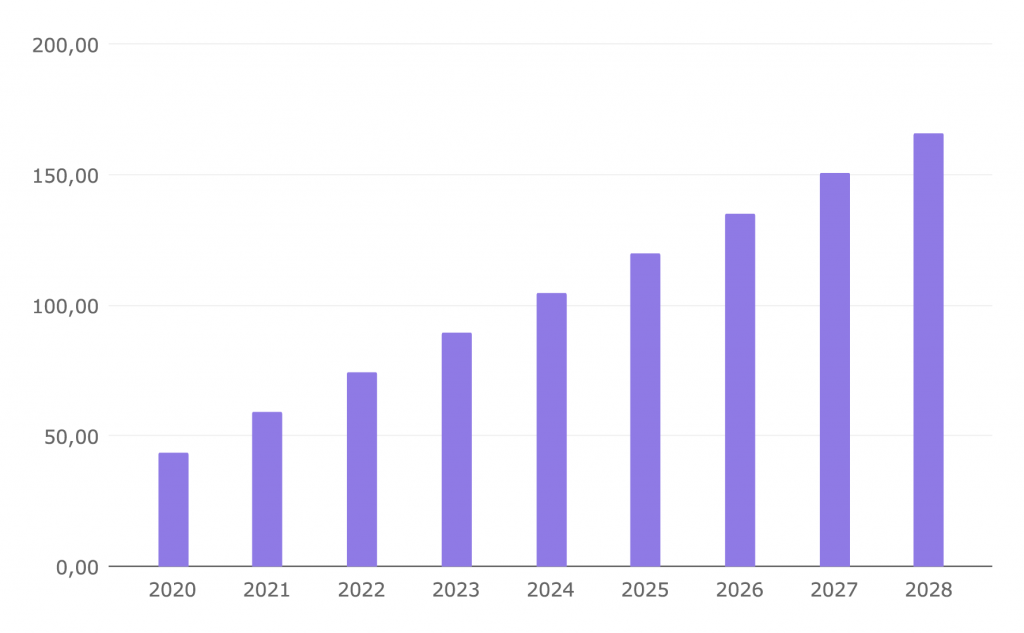Life in 2045: a preview of cities in 20 years’ time

20 years from now, more than 6 billion people will live in cities, primarily in Africa and Asia. This growing urban population requires solutions to make these cities organized, sustainable and equitable. Housing and transportation will be paramount.
If we had to place the entire global population on a scale and more or less balance it, we could divide people according to their place of residence. Just over half (56%) of the world’s 8 billion human beings currently live in urban areas, while the rest live in rural areas or small towns. However, our scale would become increasingly unbalanced over time.
In 20 years’ time, the world’s urban population is expected to increase by one and-a-half times, to 6 billion people. And, by 2050, 7 out of every 10 people are expected to be living in cities. This will put considerable pressure on urban planning, forcing us, as it already is, to design the cities of the future so as to ensure that they are liveable, fair and sustainable.
What will the cities of the future look like?
When conjuring up cities 20 years from now, we tend to imagine large buildings and innovative technologies. However, we cannot be sure that in the next few decades the streets will be full of flying taxis or self-driving vehicles. What we can safely say is that many of these cities will be very large and will grow, especially in Africa and Asia.
According to the World Population Prospects 2022 report, published by the UN, by 2050 just eight countries will account for more than half of the world’s estimated population growth: the Democratic Republic of Congo, Egypt, Ethiopia, India, Nigeria, Pakistan, the Philippines and Tanzania.
The World Bank provides further interesting insight when it comes to envisaging what cities will look like in the future: the expansion of urban land consumption outpaces population growth by as much as 50%. This means that 1.2 million km² of new urban built-up area could be added to the world by 2030.
Such sprawl puts pressure on land and natural resources, and paves the way for uninclusive and unequal development. Conversely, there is the desire to create organized, sustainable and equitable cities.
The challenges of urban growth
The difficulties facing cities can be divided into two broad types: social and environmental. Firstly, cities must be organized to ensure access to good infrastructure and services for the entire population. Secondly, they must achieve this while minimizing their greenhouse gas emissions and pollution levels. It is estimated that cities are currently responsible for two thirds of global energy consumption and more than 70% of greenhouse gas emissions.
The challenges the World Bank says cities are facing include meeting fast-growing demand for affordable housing and new infrastructure, creating viable and optimized transport systems, and boosting resilience to climate change.
Cities must also provide basic services and employment for everyone, including the poorest, as well as opportunities for the displaced. It is estimated that more than half of forcibly displaced people end up living in urban areas.
Other major hurdles include achieving energy efficiency, implicating everyone in cultural life and using data to build smart city models that pinpoint needs and instantly generate solutions.
Housing and transport: pivotal in cities
Countries and regions around the world have developed plans to make their cities more sustainable by transforming both housing and vehicles. When it comes to buildings, strategies revolve around one basic concept: decarbonization.
In the next few years, buildings are expected to become more energy efficient, less reliant on fossil fuels for lighting and air conditioning, and to introduce renewable energy systems such as solar panels.
It is also important to reduce the impact of constructing buildings. Accordingly, buildings are expected to be made of low-carbon materials and to factor in the circular economy and the efficient use of materials in their construction and renovation.
The aim is to ensure that housing is also equitable, so that cities are no longer split into wealthy areas and suburbs with sub-standard infrastructure. As the World Bank points out, buildings—not only for homes, but also for hospitals, schools or businesses—are closely linked to the economy, local employment and quality of life and must be made to protect people.
It is also essential to modernize transport systems. Mobility is set to increase and so are fuel prices (for example, the price of a barrel of oil is expected to double between 2005 and 2050). These two realities require more flexible and accessible transport systems that are not reliant on fossil fuels.
If we look at European Union policies, for example, 20 years from now cities will have stronger public transport networks, easier and more attractive routes for cycling and walking, networks of charging points to encourage electric mobility, multimodal transit hubs and on-demand passenger transport systems, among other features.
Projected revenue generated by companies in the global smart city from 2020 to 2028





















